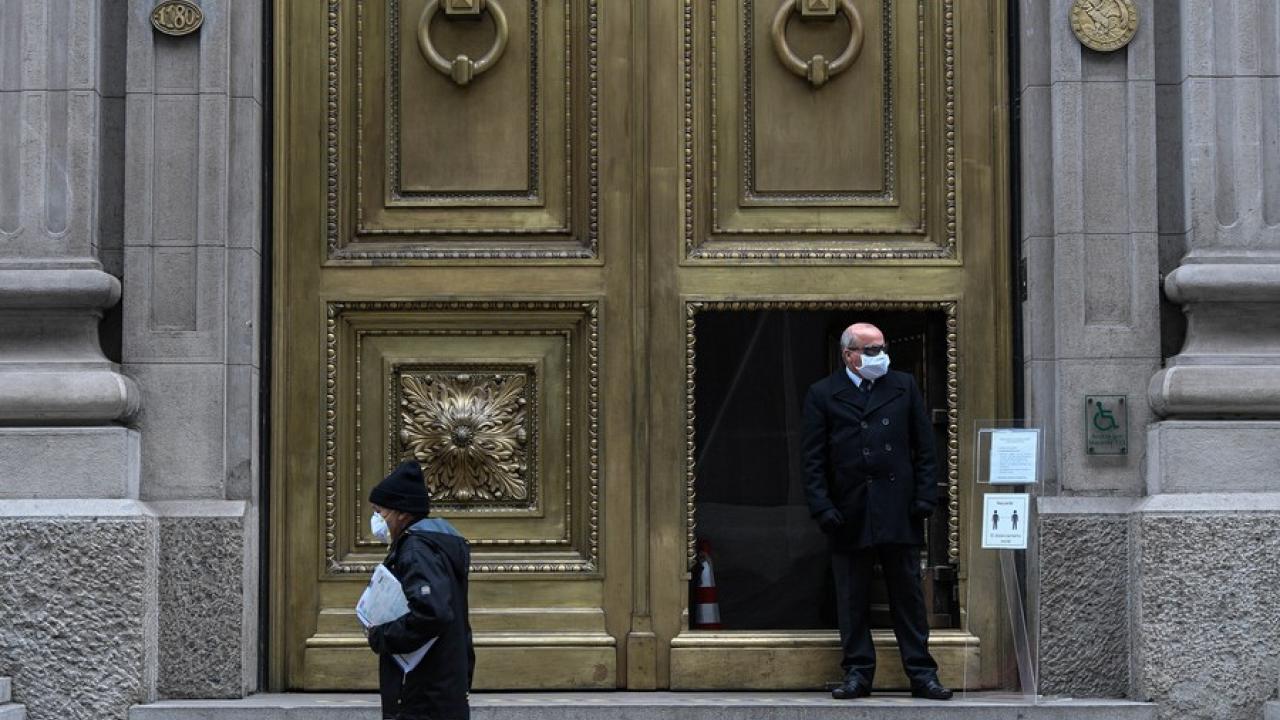
The trend has accumulated two upward months, since in April it left behind the downward trend of the previous fourteen months, not counting February of this year. “The fiscal policy that we have carried out, led by the economic team, in particular Minister Marcel, is giving results,” Chilean President Boric said in this regard.
The Consumer Price Index (CPI) of Chile has risen one tenth in May compared to April, and has stood at 4.1% year-on-year, as disclosed this Friday by the country's National Institute of Statistics (INE).
Thus, Chilean inflation has been rising for two months, since in April it left behind the downward trend of the previous 14 months, not counting February of this year.
It was in March when the lowest figure since May 2021 was reached (when it was 3.6%).
In monthly terms, inflation recorded a variation of 0.3%, two tenths less than in April and one tenth less than in March.
The accumulated inflation for the year now reaches 2.4%. Twelve of the thirteen divisions that make up the index contributed positive impacts on the monthly variation, while one presented negative impacts.
Among the divisions with increases in their prices, the increases in transportation (0.6%), clothing and footwear (1.9%), recreation, sports and culture (1%) and miscellaneous goods and services (1%) stood out. For its part, the division that recorded monthly decreases in its prices was housing and basic services (-0.3%).
In this context, the Central Bank of Chile decided in its last monetary policy meeting, held last May, to reduce interest rates by 50 basis points, to the level of 6%.
PRESIDENTIAL SUPPORT
The figures were well received by the ruling party, from the first magistracy downwards.
The Chilean president, Gabriel Boric, highlighted the latest figures given that, he maintained, “the fiscal policy that we have carried out, led by the economic team, in particular Minister Marcel, is giving results.”
In statements to a local media, Boric highlighted the role of the head of the Treasury in economic matters and defended him against the "controversies when they have tried to contradict Minister Marcel", calling for a review of the minister's projections and stating that "the "The facts have ended up proving him right."
During the morning, the Minister of Economy, Nicolás Grau, also spoke with the press, where he analyzed the implications of the new inflation data, emphasizing that in the medium term it would still be within the Central Bank's target range (3%).
“The inflation we saw today is around what was expected, slightly above the average. (…) The important thing is to remember that the different decisions, particularly those made by the Central Bank in the exercise of its autonomy, are taken not considering the month-by-month figure but rather a medium-term projection, which continues to be around to 3%,” Grau highlighted.
“In general, inflation is having a reasonable dynamic in the country, and we have a positive situation after what we had a year, a year and a half ago,” concluded the Minister of Economy.
ESTIMATED RANKS
"One of the reasons behind the high records of the first five months of the year was, in our opinion, the rise in the exchange rate experienced during 2023. The recent appreciation would be a key factor to have lower CPIs in the coming months, and moderate the increase mainly in the tradable segment. In fact, in interannual terms its variation went from 2.3% in December to 3.9% in May, considering the 0.4% that rose in the month," explained César Guzmán, manager of Macroeconomics in Security Investments.
Meanwhile, non-tradables increased 0.1% in the month, maintaining its interannual variation at 4.4%
The breakdown between goods and services showed a monthly increase of 0.4% and 0%, respectively, with which the former accumulated an increase of 3.6% in the last year, while the latter remained at 4.7%. .
Among the conclusions of the investment firm, the May figure is seen within the estimated ranges, without constituting a great surprise to the market or to the Central Bank's base scenario of the Report.
"The most positive thing was the moderation of the underlying indicators at the margin, which would continue with limited records given the appreciation of the peso," added Guzmán.
Regarding monetary policy, the figure does not change the view that the Central Bank would continue with interest rate cuts, although the magnitude and speed of the adjustments will be more dependent on the upcoming data, and the actions of the FED. –whose next meeting is on June 12- a week before the policy meeting of the issuing body.
"For that meeting we anticipate that the Central Bank would evaluate cuts of 25 or 50 basis points," the executive concluded.









